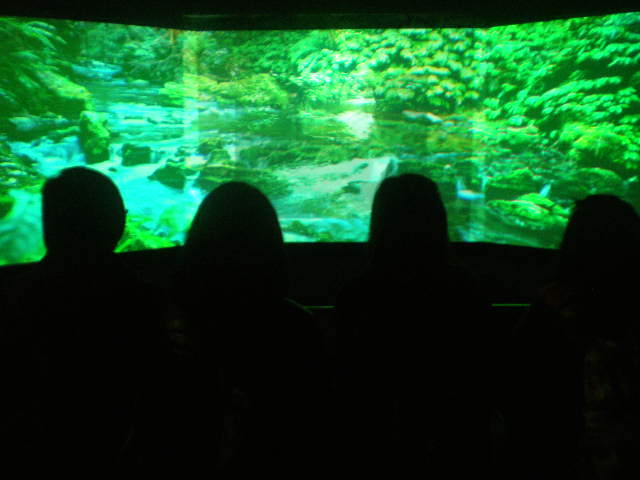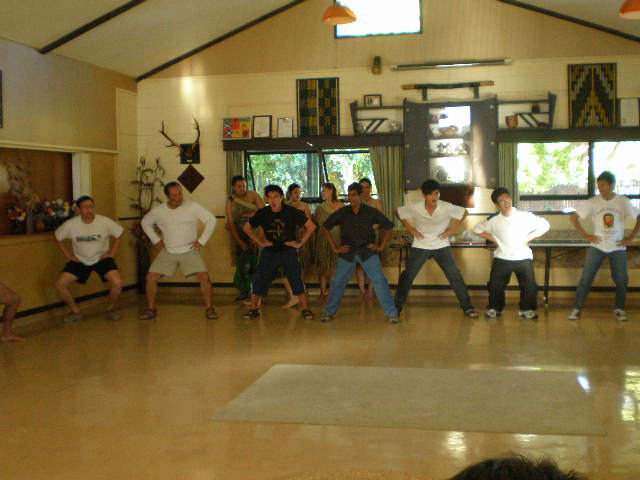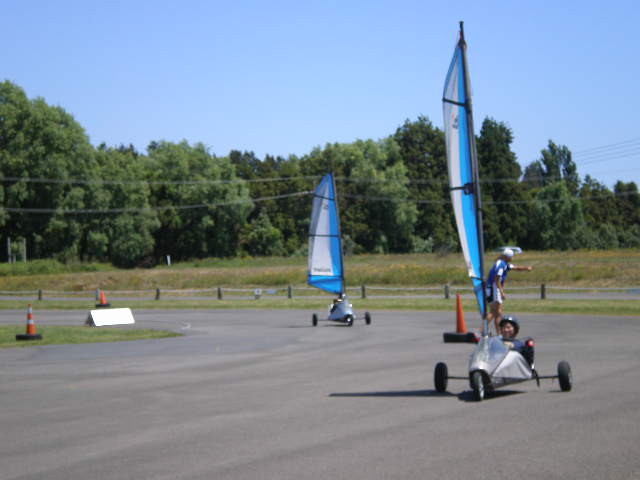Waitomo Glowworm Caves
Archana Rai 09A01

We visited the Waitomo Caves which are also known as the Glowworm Caves. These caves are actually limestone caves and home to a large number of Glowworms (larve of mosquito-like fly called fungus gnat). As their name suggests, they literally glow in the dark thus looking like the stars in a moonless sky. Unfortunately, we were not allowed to take photos of it as it would have disrupted the beauty of the caves as well as the glowworms. We also saw several limestone features like stalacites and stalagmites. These structures are formed when water drips through the cave roof. Crystals are formed around the edge of the droplet and over time a hollow straw forms. If the straw blocks up, water flows over its outer surface and the straw becomes a stalacite. When water droplets falls to the floor of the cave, crystals build up into stalagmites. We were also told not to touch the walls of the caves as human activities and tourism were beginning to destroy the beauty of the white inner walls of the caves. Human activities could destroy cave decorations and pollute streams. Overall, the visit the limestone caves was an enriching experience. Not only had we learnt a lot, but we were granted the opportunity to see, perhaps the most beautiful caves in New Zealand.
Adina Ang 09A01

Apart from the educational trip that was offered to us students, we also had our fun with different attractions in New Zealand and one of it would definitely be the Glowworm Caves. First of all, the word Glowworm was enough to make me curious. A worm that glows, how beautifully contradicting as I do not usually imagine a worm to be beautiful.
One fact that I learnt from this trip was that the glowworm light is called, bioluminescence. This experience can never be found in Singapore and it really made me treasure the beauty of other things from other countries!
Cassandra Lau 09A01

Our trip down to the Waitomo Glowworm Caves on the third day was indeed an eye-opener to the karst landscape which we had previously only read about in our lecture notes. An experienced guide brought us for a cave tour in which we learn so much about the formation and the fragility of the limestone cave. The glowworms which live in the cave emit luminescent light which appeared to be like a star-filled sky on the cave ceiling. We were in absolute awe at such a beautiful sight above our heads. As many tourists visit the limestone cave daily, the cave environment, inside and out, has to be monitored closely to ensure suitable conditions for optimum cave management. We truly enjoyed the visit to the Waitomo Glowworm Caves. The mesmerising image of the glowworms’ lights is certainly, still vivid in our minds.
Volcanic Activity Centre
Purnima d/o Balraju 09A01

The visit to the Volcanic Activity Centre was a treasure trove filled with not only facts about volcanoes within New Zealand but earthquakes as well. Singapore, being a country protected by our neighbours’ coasts from seismic activity, we are hardly able to experience an earthquake of large magnitude. At the centre, the Earthquake Simulator allowed us to feel what New Zealanders would normally experience during earthquakes. The Volcanic Activity Centre was a place for us geographers to digest information beyond our lecture notes and apply them into the real world.
Maori
Tan Xuan Min 09A01

During our geography trip to New Zealand, the visit and overnight stay at the Paparoa Marae was the most memorable. It was an enriching experience as we got to learn about the Maori culture and protocols. The most memorable was the part when we have to touch our noses with the Maori people. To me, it was a frightening experience as I have never touch noses with anyone in my entire life, and more importantly, they are still strangers to me since I have just seen them. I also learned a lot during the stay at the Paparoa Marae. Firstly, I found out that the Maori are actually a very friendly group of people, although some look rather fierce due to their tatoos. Secondly, the Maori are very hospitable. They welcomed us to the Marae with open heart and smiles. Also, the food was great, and I still cannot believe that it was actually the males cooking for us. Finally, the performances by the Maori students were awesome. Their traditional songs, dances and even fierce war challenges were amazing. On whe whole, the stay at the Paparoa Marae was an enriching one and I have enjoyed myself.
Lee So Jung 09A01

I went to New Zealand for a geography school trip last December from 4th to 11th. Although I had a good time with exotic landforms and have had new experiences, what struck me the most was my last 2 days of the trip in the Maori village.
Before meeting the Maoris for the first time, we were told that we must be formal and respectful towards the chief and other Maoris. As Korea has a similar culture of placing strict importance on showing respect to adults and people who are in higher ranks, this practice was not unfamiliar to me. However, one difference about the Maoris was that once we were accepted to stay in their village, I could really feel their sincere and warm welcome. Through our stay, they remained cordial and hospitable and this had left a memorable impression on me.
Another thing that I found remarkable was how they conserved their culture despite the surrouding environment. One thing was that outside the place, we could spot the railroad signage outside and surrounding the village was the usual suburban landscape. However, within the village, exquisite Maori carvings around the place was preserved and I found them fascinating to look at. Also, the framed photographs of their ancestors on the wall of the holy place and their stories that were verbally passed down the generations well-mirrored their unfading respect towards their ancestors. I thought perhaps this is why they could conserve their unique culture over the several decades because they were resolute in sustaining their ancestral ways of life.
Overall, although it was a short visit, the Maori people really left an indelible impression through this rare, yet pleasant stay in their village.
Lydia Lee 09A01

The trip to New Zealand has been enriching in many ways. The trip has benefitted me in many aspects such as the cultural aspect. The exposure to Maori culture was one of the most memorable events. We were introduced to their protocols. Maori use song, dance and dress in traditional costume to reinvent their traditions. In the Marae, we were taught to dance to Maori traditional songs. This experience did not only last for a few hours. It extended till the night where the Maori provided us with dinner and a place to live in. After eating the wonderful food provided, they then performed a range of traditional songs, dances and fierce war challenges which was an eye opener to me. The night ended with many stories and legends told to us.
Through this visit, I understood Maori history, customs and values. I was impressed in the efforts of maintaining their culture which showed me the importance of traditions and rituals. Even the youths were trying to protect their culture.
After this visit, I have learnt to be proud of my own culture and appreciate the importance of ones’ background.
Blowkart
Cheryl Leong 09A01

The Blowkart experience is incredibly amazing! It was my first experience sitting on the Blowkart and I’m deeply amazed that it can actually travel at such a high speed! The Blowkart is a small land yacht which makes use of the wind power to create the movement of the Blowkart. The ride was exceedingly thrilling and exciting! It is no wonder that this creation of the Blowkart won the award for new products at the Berlin Adventure in 2002. The Blowkart is indeed a prized innovation of the New Zealanders that must be tried by everyone.









